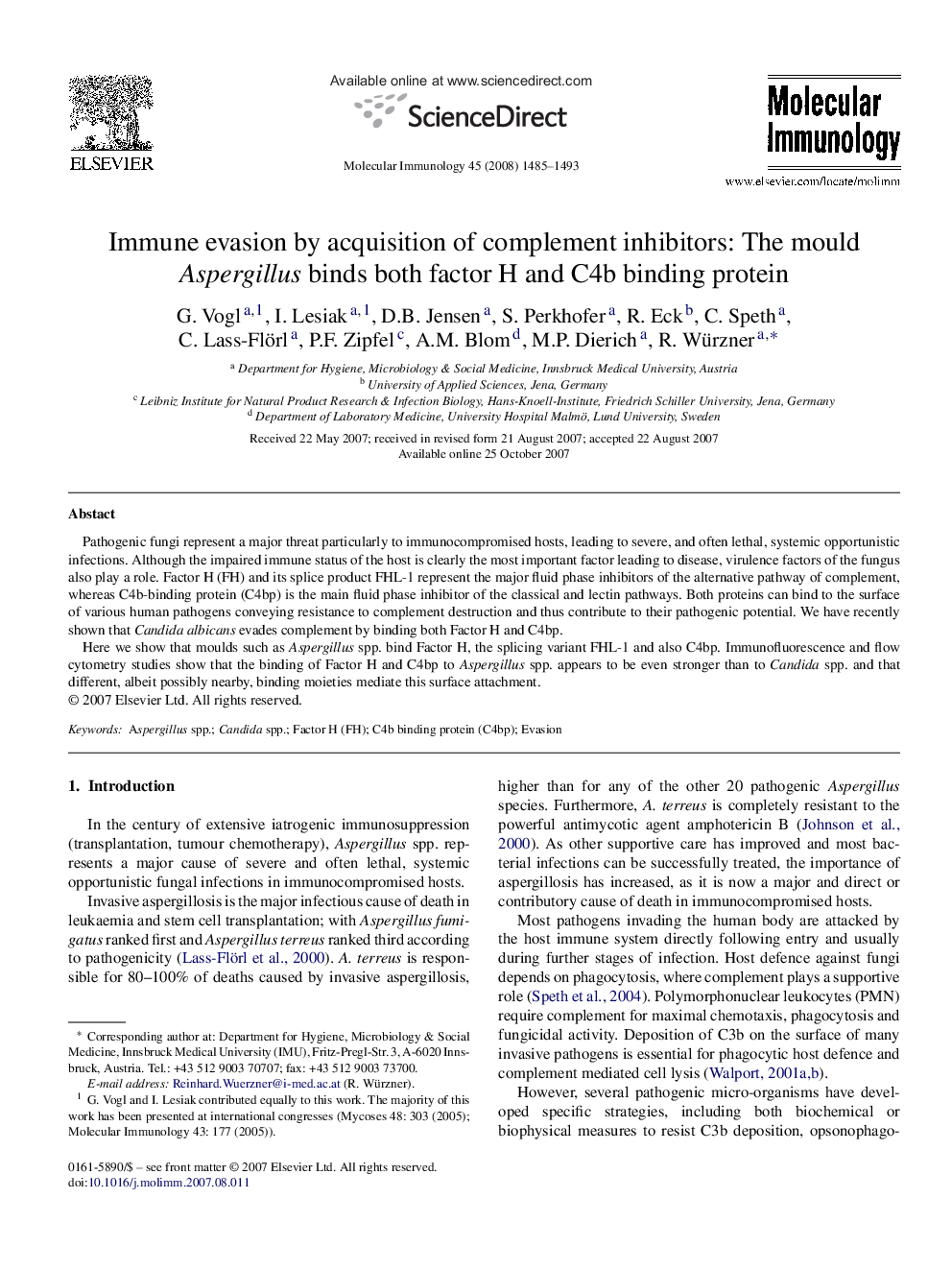| Article ID | Journal | Published Year | Pages | File Type |
|---|---|---|---|---|
| 2832834 | Molecular Immunology | 2008 | 9 Pages |
AbstactPathogenic fungi represent a major threat particularly to immunocompromised hosts, leading to severe, and often lethal, systemic opportunistic infections. Although the impaired immune status of the host is clearly the most important factor leading to disease, virulence factors of the fungus also play a role. Factor H (FH) and its splice product FHL-1 represent the major fluid phase inhibitors of the alternative pathway of complement, whereas C4b-binding protein (C4bp) is the main fluid phase inhibitor of the classical and lectin pathways. Both proteins can bind to the surface of various human pathogens conveying resistance to complement destruction and thus contribute to their pathogenic potential. We have recently shown that Candida albicans evades complement by binding both Factor H and C4bp.Here we show that moulds such as Aspergillus spp. bind Factor H, the splicing variant FHL-1 and also C4bp. Immunofluorescence and flow cytometry studies show that the binding of Factor H and C4bp to Aspergillus spp. appears to be even stronger than to Candida spp. and that different, albeit possibly nearby, binding moieties mediate this surface attachment.
